注釈
Go to the end をクリックすると完全なサンプルコードをダウンロードできます.
流線#
ベクトルフィールドを積分して,流線を生成します.
この例では,血流速度の流線を生成します.速度の等値面がコンテキストを提供します.流管の開始位置はデータを実験して決定しました.
from __future__ import annotations
import numpy as np
import pyvista as pv
from pyvista import examples
頸動脈#
統合可能なベクトルフィールドを含むサンプルデータセットをダウンロードします.
mesh = examples.download_carotid()
半径2.0の球内のランダムなシード点を使用して,流線フィルタリングアルゴリズムを実行します.
streamlines, src = mesh.streamlines(
return_source=True,
max_length=100.0,
initial_step_length=2.0,
terminal_speed=0.1,
n_points=25,
source_radius=2.0,
source_center=(133.1, 116.3, 5.0),
)
結果を表示します.このデータセットの速度場は低分解能で測定されたため,多くの流線が動脈の外側を通過することに注意してください.
p = pv.Plotter()
p.add_mesh(mesh.outline(), color='k')
p.add_mesh(streamlines.tube(radius=0.15))
p.add_mesh(src)
p.add_mesh(mesh.contour([160]).extract_all_edges(), color='grey', opacity=0.25)
p.camera_position = [(182.0, 177.0, 50), (139, 105, 19), (-0.2, -0.2, 1)]
p.show()
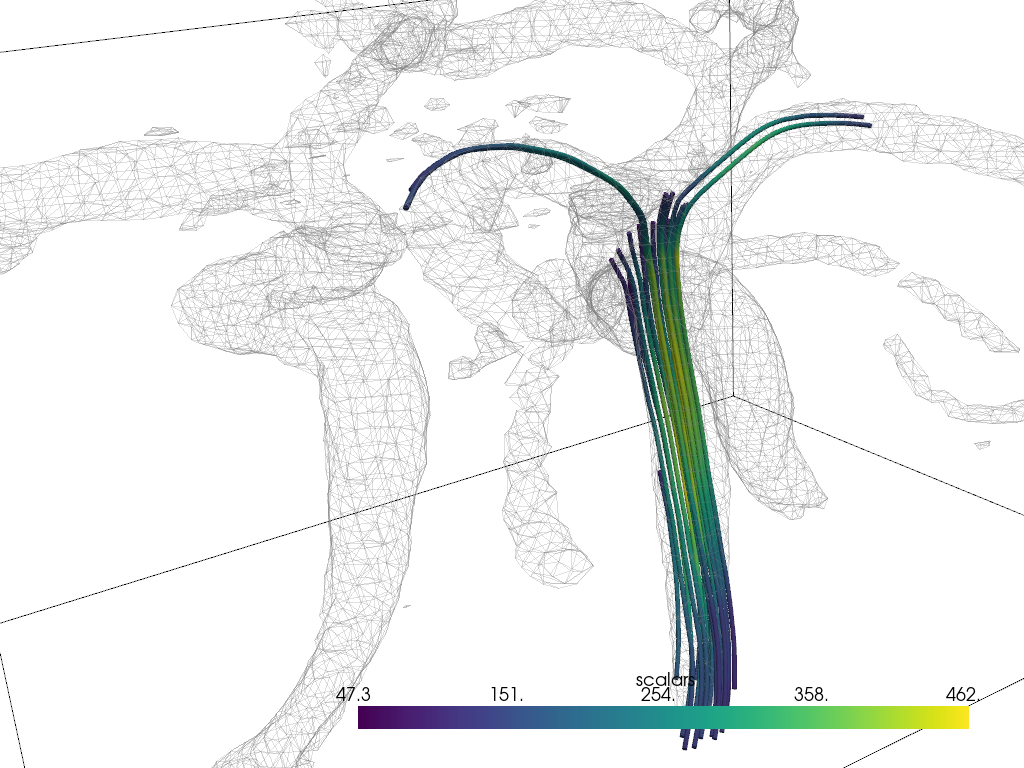
血管#
血流の別の例を次に示します:
mesh = examples.download_blood_vessels().cell_data_to_point_data()
mesh.set_active_scalars('velocity')
streamlines, src = mesh.streamlines(
return_source=True,
source_radius=10,
source_center=(92.46, 74.37, 135.5),
)
boundary = mesh.decimate_boundary().extract_all_edges()
sargs = dict(vertical=True, title_font_size=16)
p = pv.Plotter()
p.add_mesh(streamlines.tube(radius=0.2), lighting=False, scalar_bar_args=sargs)
p.add_mesh(src)
p.add_mesh(boundary, color='grey', opacity=0.25)
p.camera_position = [(10, 9.5, -43), (87.0, 73.5, 123.0), (-0.5, -0.7, 0.5)]
p.show()
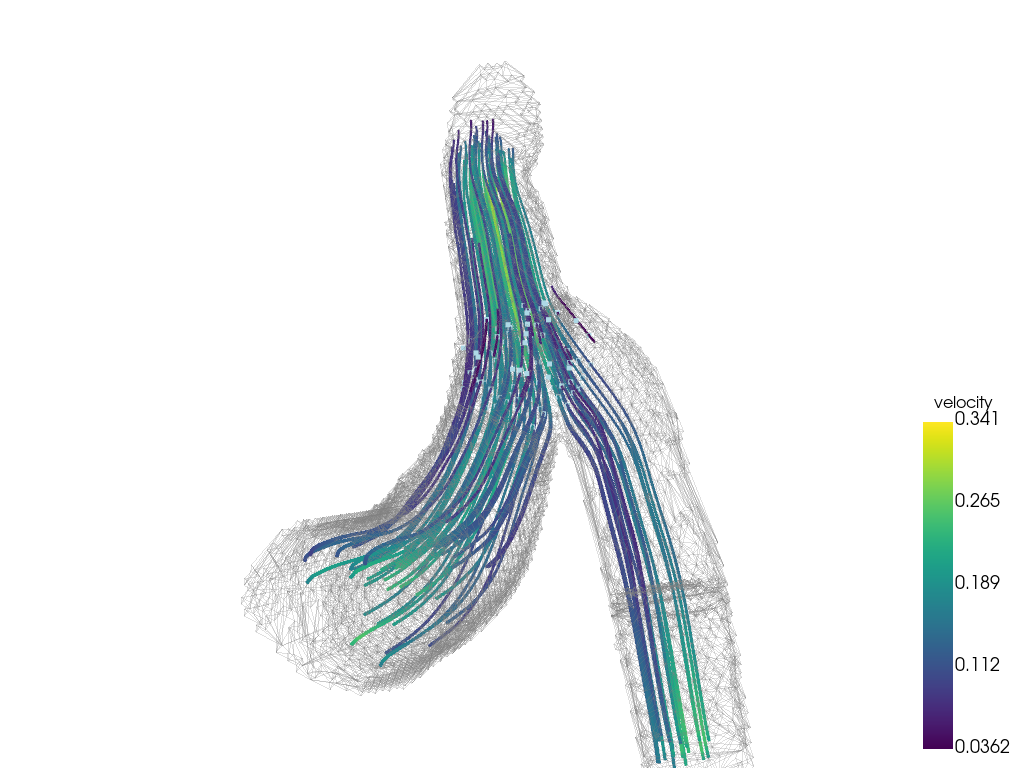
流入口が利用可能な場合などは, pyvista.DataSetFilters.streamlines_from_source() フィルタを使用してソースメッシュを提供することもできます.この例では,流入口を領域のすぐ内側に抽出し,流線の始点として使用します.
source_mesh = mesh.slice('z', origin=(0, 0, 182)) # inlet surface
# thin out ~40% points to get a nice density of streamlines
seed_mesh = source_mesh.decimate_boundary(0.4)
streamlines = mesh.streamlines_from_source(seed_mesh, integration_direction='forward')
# print *only* added arrays from streamlines filter
print('Added arrays from streamlines filter:')
print([array_name for array_name in streamlines.array_names if array_name not in mesh.array_names])
Added arrays from streamlines filter:
['IntegrationTime', 'Vorticity', 'Rotation', 'AngularVelocity', 'Normals', 'ReasonForTermination', 'SeedIds']
時間で着色した流線に沿った流線を流線に沿ってプロットします.
sargs = dict(vertical=True, title_font_size=16)
p = pv.Plotter()
p.add_mesh(
streamlines.tube(radius=0.2),
scalars='IntegrationTime',
clim=[0, 1000],
lighting=False,
scalar_bar_args=sargs,
)
p.add_mesh(boundary, color='grey', opacity=0.25)
p.add_mesh(source_mesh, color='red')
p.camera_position = [(10, 9.5, -43), (87.0, 73.5, 123.0), (-0.5, -0.7, 0.5)]
p.show()
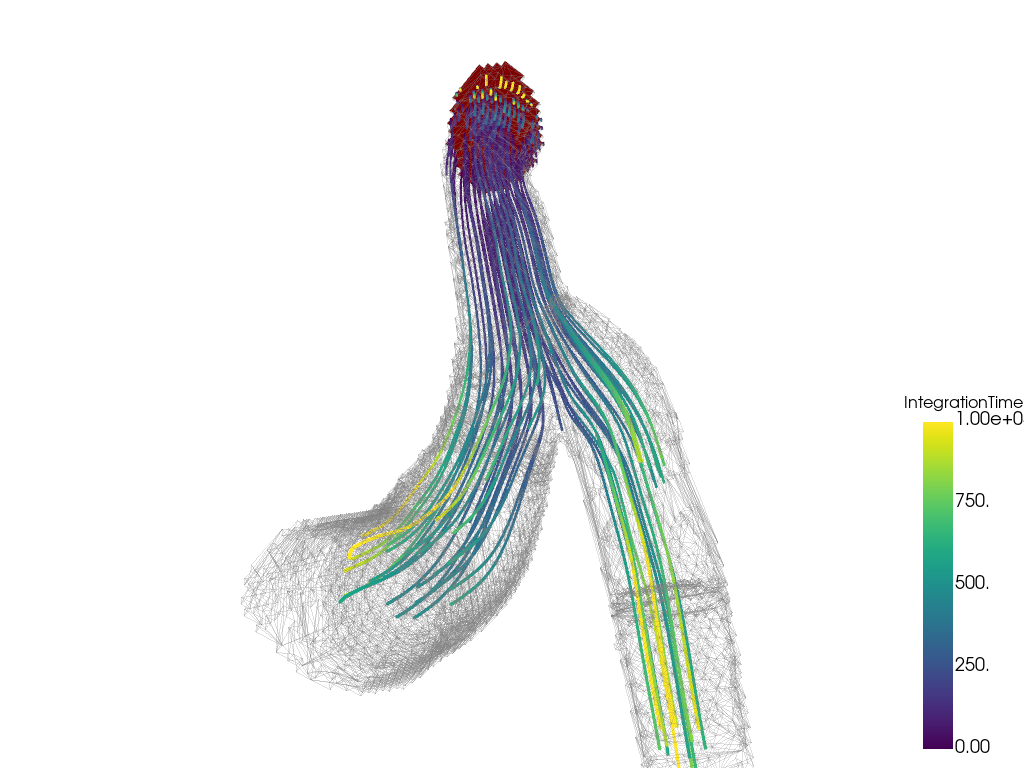
キッチン#
kpos = [(-6.68, 11.9, 11.6), (3.5, 2.5, 1.26), (0.45, -0.4, 0.8)]
mesh = examples.download_kitchen()
kitchen = examples.download_kitchen(split=True)
streamlines = mesh.streamlines(n_points=40, source_center=(0.08, 3, 0.71), max_length=200)
p = pv.Plotter()
p.add_mesh(mesh.outline(), color='k')
p.add_mesh(kitchen, color=True)
p.add_mesh(streamlines.tube(radius=0.01), scalars='velocity', lighting=False)
p.camera_position = kpos
p.show()
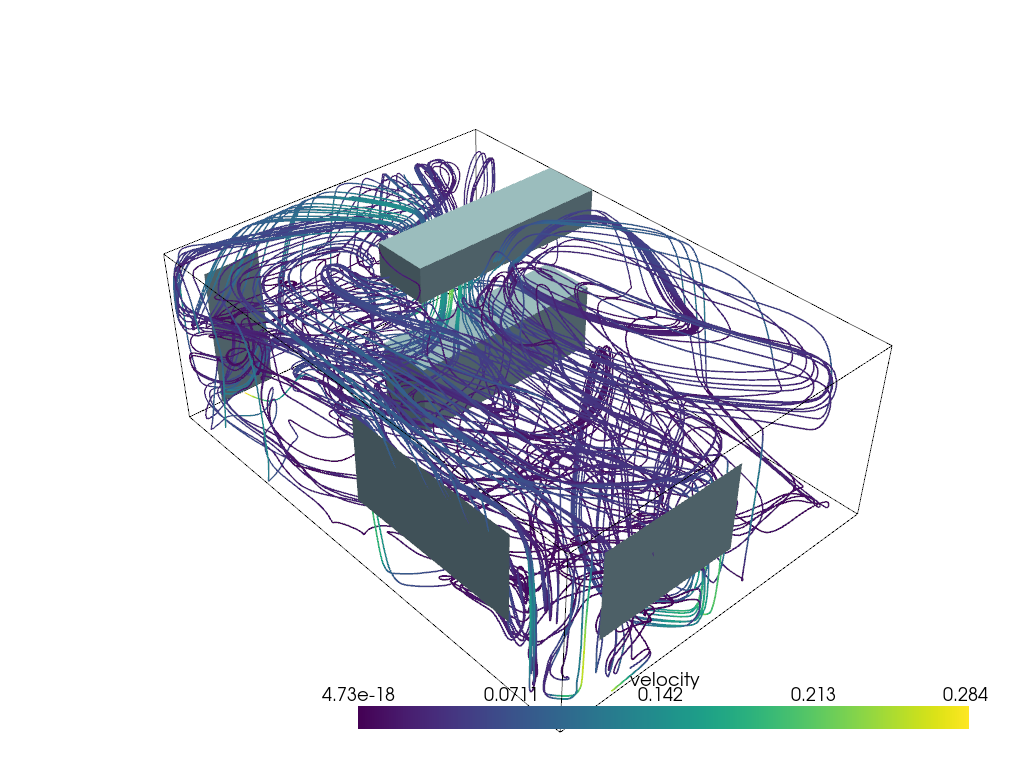
カスタム3 Dベクトルフィールド#
nx = 20
ny = 15
nz = 5
origin = (-(nx - 1) * 0.1 / 2, -(ny - 1) * 0.1 / 2, -(nz - 1) * 0.1 / 2)
mesh = pv.ImageData(dimensions=(nx, ny, nz), spacing=(0.1, 0.1, 0.1), origin=origin)
x = mesh.points[:, 0]
y = mesh.points[:, 1]
z = mesh.points[:, 2]
vectors = np.empty((mesh.n_points, 3))
vectors[:, 0] = np.sin(np.pi * x) * np.cos(np.pi * y) * np.cos(np.pi * z)
vectors[:, 1] = -np.cos(np.pi * x) * np.sin(np.pi * y) * np.cos(np.pi * z)
vectors[:, 2] = np.sqrt(3.0 / 3.0) * np.cos(np.pi * x) * np.cos(np.pi * y) * np.sin(np.pi * z)
mesh['vectors'] = vectors
stream, src = mesh.streamlines(
'vectors',
return_source=True,
terminal_speed=0.0,
n_points=200,
source_radius=0.1,
)
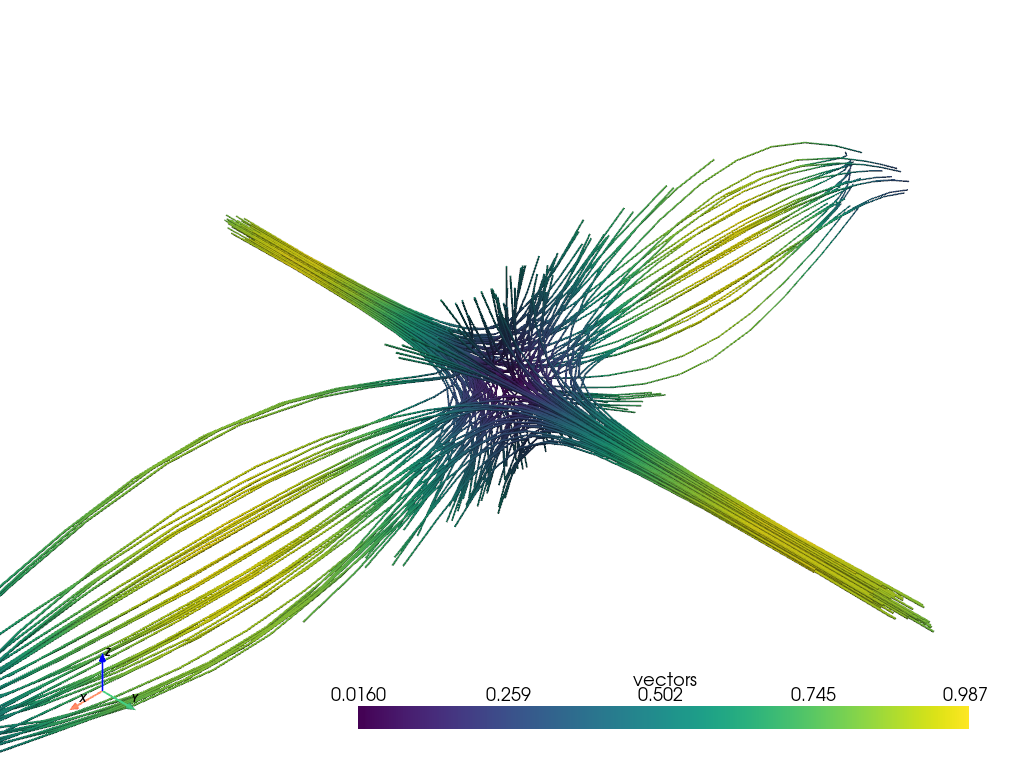
Total running time of the script: (0 minutes 21.189 seconds)